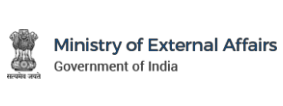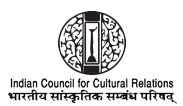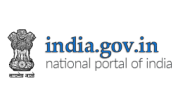India and the United States : The Long View
1. It is really a great pleasure to speak to all of you on the relationship between India and the United States. As the Ambassador of one nation to the other, it is my responsibility to promote these ties. That is a task which I have addressed myself to for more than three decades, twice in the Foreign Ministry and twice more at the Embassy. It was also my privilege to be associated deeply with a phase when these relations underwent real transformation. On the American side, Ambassador Burns was a key partner during that period. So, it is a special honor to be here at his invitation and to share my thoughts, with him present, on where India-US ties could be headed.
2. In diplomacy, as indeed in life, taking a long view is sometimes seen as a luxury. But the fact is that some nations do have 'permanent'interests. These are more consistent objectives that tend to be generally broader and more strategic in nature. They require consensus at home and sustained application abroad. As a generalization, bigger nations are more prone to taking a long view. Over a period of time, this could get internalized to a point where it actually becomes an attitude, even the basis of assumptions. In the case of the US, maintaining its global dominance is the strategic goal, expressed through the espousal of its values and pursued using the politics of alliances. Where India is concerned, consolidating and building on its hard won independence is the primary objective. This leads as much to an emphasis on political sovereignty as on rapid economic development. Pursuing these goals by widening its options was a logical though not always easy tactic. The history of the first five decades of our relationship was one of the intersection of these approaches. But then, the world changed and in more ways than one. In fact, that process unfolds even as we speak. Larger trends - political, economic, social, demographic or technological - are making themselves felt. A new long view is coming into being in both nations, not yet fully comprehended even by policymakers who, therefore, tend to lapse into old habits at times. It is the story of this transition that I would like to share with you all today.
3. The early years of our relationship were dominated by the generous economic assistance that the US offered India. Even before that, there was a foundation of goodwill arising from the efforts of the United States in pressing the United Kingdom to accept Indian independence. That a long view was at work is evident from the fact that US representatives to India - be they politicians like Louis Johnson or diplomats like William Phillips, the latter incidentally a Harvard graduate - showed sympathy for Indian nationalism in the face of resistance from your closest ally. Not many would be aware that it was on President Roosevelt's personal insistence that the UK consented to India signing the UN declaration in 1942. From material accessible today, it is a fair conclusion that India's democratic politics was an important factor in these attitudes. That the emergence of the US as the dominant global power also required the winding up of antiquated colonial empires does not materially detract from the argument.
4. This approach continued into the Truman Administration as well. By this time, India was independent and the frictions on non-alignment and Kashmir were already in evidence. Yet in 1951, the US Congress passed legislation at President Truman's request that began food aid which was to continue for the next two decades. Both the policy and its committed band of supporters, mainly liberal Democrats, became symbols of the values connect as a result. The Eisenhower era is more associated with Cold War politics, military alliances and John Foster Dulles. However, this was the time that saw a massive expansion of food supplies using the PL-480 mechanism, coordination with other aid donors through the World Bank, the start of our nuclear cooperation, and some understanding of India's industrialization ambitions. More tellingly, it produced a broad theory of helping the economies of democratic nations to 'take off', made famous through the writings of Walt Rostow and Max Milliken of the MIT. Ironically, the big error of this era was in its assumption that a democratic India would not get close to the USSR even if its national security was undermined.
5. The Kennedy period is regarded as much truer to the beliefs of the two societies, even if Nehru himself related much better at a personal level to his predecessor. Aid levels not only grew further but a number of signature projects were realized. These include key infrastructure projects in irrigation, energy, fertilizer and skills development, not least the now-famous Indian Institute of Technology at Kanpur. The Peace Corps actually established itself in India. And when the India-China war happened in 1962, the US responded swiftly to India's plea for help. This was not just about balance of power.There is no question that the US saw democracy under attack by communism. Assessing the Johnson Administration is much harder, in part because its record and motives were more mixed. So, on the one hand, the US offered in 1964 multi-year military assistance to rebuild India's armed forces; yet paid the cost of failing to stop Pakistan from using US-provided equipment to attack India in 1965. President Johnson personally took interest in getting India to reform its food production policy-leading to what became the Green Revolution - as he saw in that another facet of his Great Society initiative. Yet, he did much to undermine the goodwill that should have naturally accrued by holding up shipments to express displeasure for India's position on the Vietnam war.
6. When it came to Nixon thereafter, his realpolitik made it difficult to credit him with much sympathy for democratic values. That someone equally hard-headed looked out for India's interests at that time is another story. What is relevant to our argument is that the Nixon Administration, as also its short-lived successor, were caught up in a competition with the USSR. The Carter period, while starting well with post-Emergency India, foundered on the twin challenges of nuclear differences and the Afghan war. If chemistry improved under Reagan and then Bush, structural limitations imposed by the Cold War prevented more serious policy outcomes. But the bottom line, even at the height of our differences, was that the US had a stake in the success of a large developing democratic polity.
7. What of India during this period? To begin with, we had longer administrations and consequently, more continuity of policy. There is no doubt that American democracy was much admired and indeed, there were many expectations of it. Part of this has its origins in the colonial era and our founding fathers actually drew heavily from the US experience while framing our constitution. American economic assistance, as I have noted earlier, was critical to India's nation-building in its initial years and was obviously widely appreciated. At times of trouble, be it famine or the conflict with China, we turned instinctively to the US, whether it was in the assumption of generosity or with a belief in shared values. In its own region, India has usually spoken up when democratic politics has been undermined, when freedom of faith has been threatened or when minorities have been maltreated. With some notable exceptions, American policy positions were not unsympathetic to India's stance. The growth of the Indian American community has also had an impact in the 1990s. The United States was seen as having lived up to its promise of equal opportunity. This also started to influence public attitudes in India to the US. When an Indian Prime Minister spoke later of the two countries being natural allies, this was less an analysis of strategic convergence and more an expression of comfort levels. Having noted that, it must be acknowledged that a sense of shared values has been tempered by both experience and calculations.
8. Let us now look at the limitations on the relationship. In the early years when American aid was such a big factor, it generated its own set of issues. Giving is rarely without strings, and often, accompanied by process demands as well. That can be quite challenging for the recipient, in self-esteem as much as in protection of interests. US pressure was often felt by India on the Kashmir problem. While it may have been successfully fended off, such exercises did leave their scars. Moreover, values themselves do not have an universal meaning. Freedom, for example, has greater sovereignty connotations for India than the US. Decolonization had an altogether different significance. Free entreprise was more embedded in American thinking whereas India, in the initial years, relied heavily on state-led development. Even if we both prized exactly the same virtues, its application in the global arena called for tactical compromises. Both nations could be, and often were, faulted on that account. From the US perspective, supporting military dictatorships was justified by the Cold War. Opposition to India taking back Goa from Portugal in 1961 was part of a NATO commitment. Ignoring the Bangladesh crisis protected the China opening in 1971, in turn, essential for balancing the USSR. Overlooking Pakistan's nuclear program was the price of the Afghan war. Where India was concerned, both security and economics dictated closeness to the Soviet Union. Compulsions of its diplomacy thereafter sometimes left it open to charges of inconsistency. The debate about who put interests above values can go on forever.
9. When it comes to interests, the sources of India's approach are not difficult to identify. Geopolitical factors determine relationships with major powers while culture and history define narrower goals in its immediate vicinity. Add to that the balance of power requirements which form part of the games that nations naturally play. There are then economic objectives of building national capabilities and ensuring a better quality of life . Aspirations bring it all together. India has its ambitions and dreams, just as other powers do. And while many have advanced their prospects through shifting alliances, ours has been a steadier if more autonomous course. In every aspect of its interests, India has been acutely aware that the US has an important role to play. But a mix of politics, history, economic thinking and strategic calculation caused India to hedge on that relationship. The USSR, after all, was very much a factor, not least in its relevance to an Asian balance of power. It was this desire to widen its options and avoid entanglements, not unlike the US itself in its first years after independence, that provided the basis for India's non-alignment. There can be little comparison between this India and an United States which was already dominant on the global stage. For this argument, it would suffice to focus on the American approach to the Sub-continent and its implications for the relationship.
10. Till the beginning of this century, US interests dictated a tilt to Pakistan, initially in the context of the Cold War, then as part of its China and Middle East policies as well. But ensuring an internal balance in Asia required maintaining India sufficiently to hold its own, especially at a time when US ties with China were strained. An unstable India was clearly a far worse prospect than a non-aligned one. The challenge, therefore, was to get the policy just right; to do enough that India could stand up for itself but not so much as to upset Pakistan. Both geopolitics and values helped to give this a Sino-Indian context. Economic assistance largely did the trick. American military assistance, in contrast, was very circumspect in responding to its requests for weapons, complaints about non-alignment notwithstanding. US policy could be summed up as maintaining India at a certain level, with a willingness to respond to a 911 call. It was not averse to pressing India when larger strategy so demanded. India, on its part, sought to leverage US capabilities while keeping a distance. By resisting pressures to fall in line and safeguarding its interests, India built its political brand.
11. This contradiction between an alliance approach and fierce independence was blunted by the end of the Cold War. It was not that either party reconsidered their beliefs ; there was just less need to assert them against the other. The rise of China also had its impact on any Asian security calculus. Now the logic of power needed not just the survival of India but its stronger emergence as both an economic and security partner. India too goes through the mirror image process, albeit more slowly and cautiously. The dissolution of the Soviet Union undermines a key aspect of its security calculations but paradoxically, gives it more space to engage the US. The Asian balance becomes more complicated even though India-China ties themselves improve. A more responsive approach gathers pace at both ends, but not in politics alone. Economics and even sociology are at work. The economic reform in India, initiated two decades ago and pursued by successive governments has started kicking in. It leads to higher growth rates, better quality of life and new markets within India. The overall economy transformed from what the US supported for reasons of strategy and empathy to one that now holds intrinsic value. The long view consequently becomes less minimal. If investment conditions and trade access feature strongly in our current conversations, it is proof of that change. One reflection of higher growth rates is the substantial expansion of the middle class. That not only drew more American companies to India but created the basis for a serious services industry. Today, the services trade is almost as large as the one in merchandise. Many major American companies have operations in India, varying in their complexity and significance. That they relate to it as a society is surely a part of the explanation for their rapidly growing presence. As an aside, let me comment briefly on attempts to undermine our services trade using immigration reforms. I refer to the current Senate bill. This will only lessen the competitiveness of US companies but also negatively affect the strongest advocates in India of our relationship.
12. Now, the same dynamics has also seen the growth of the Indian American community. At the time of our independence, it was less than 3000. When I first came to the US three decades ago, it was 300,000. Today, thanks to the dotcom revolution, it is more than 3 million. This human dimension of our ties has given a practical form to the values connect that we have long had. These factors have combined to produce a new long view. The Kargil conflict of 1999 provided an opportunity for the Clinton Administration to begin a course correction. The nuclear deal under President Bush, requiring the passage of laws to remove impediments not just for nuclear cooperation but indirectly for defence, space and high technology, saw policy finally catching up with reality. The Obama Administration has since consolidated those shifts. Mutual perceptions adjusted too, of India as a responsible power and of the US as one resident in Asia. The interesting aspect of this transition is its relatively evolutionary nature. Obviously, the earlier era had created enough connects to make that possible.
3. India and the United States are today positioned to embark on a more closely collaborative path. The world the two nations seek does look similar in the big picture: with greater prosperity, more freedom, market economics, rule based regimes, and pluralistic societies. At a more practical level, this is being translated into ground reality. Since 2005, the year Ambassador Burns and others worked together to put our relations on a different level, trade has tripled and investments have shot up. The two countries are each other's premier partner when it comes to military exercises. India has also emerged as the largest customer for American defense sales abroad. Our engagement today spans many more areas, from education and health to homeland security and energy. Our conversations too are more wide-ranging and honest, with less talking past each other.
14. To set the new relationship in stone, however, requires much more work. There are disappointments about missed opportunities. Short-term issues can crop up and even dominate in the absence of direction. After all, we have seen differences being publicly paraded after some years. The overhang of the old view too can persist, missing the point that our interests are convergent and not congruent. Arguments of over-investment will be made, particularly from those who never had much appetite for these ties. But the fact is that public opinion in each country about the other has shifted clearly in a favorable direction. Our politicians and business leaders get it, as do scientists, educationists and the military. The Pew polls on societal attitudes affirm this change strongly.
15. I return to this relationship after six years in Singapore and China. But what I have learnt in the last four months about its growth is an eye opener even for someone with my history. Many of these initiatives can change India, our relationship, perhaps even the larger world. Consider this for a moment, our biotechnologists are together producing the most economical vaccine in the world. Joint Projects that will take solar refrigeration to Indian villages and revolutionize photovoltaic plate efficiency are underway. So too are public health programs ranging from cancer treatment to cataract detection. Two days ago, the NASA Administrator spoke warmly to me of our growing collaboration on space exploration, including the Mars mission. A week before that, the Admiral in charge of the Pacific Command did the same of the partnership between our navies that is so key to a humanitarian and disaster relief response in the Indo-Pacific region. In Houston, they briefed me about US gas that would start flowing to India in 2017 in what could be a game-changing development. I heard in Chicago and New York of how the India relationship keeps American businesses competitive. News of fresh collaborations and investments come in regularly. The Indian American community continues with its success stories. And as for the academic world, what can I possibly say in Harvard? All this is made possible by a chemistry in our ties that I only see getting stronger. There is truly a world out there for our relationship to explore.
16. I am an optimist when it comes to the relationship. That, if nothing else, explains my frequent involvement with it. In the near term, I am confident that stronger growth in India will provide new impetus. Beyond that, I count on the long view.







